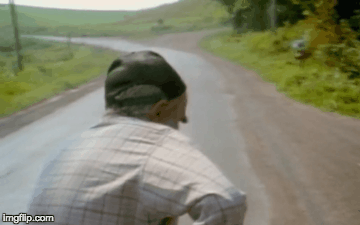In order to tell a compelling story, filmmakers are charged with the task of compressing time to make an unrealistic chronology seem natural. Using visual match-cuts and crossfades, filmmakers and film editors use a visual code to guide the viewer from one moment in space and time to another, disjointed moment. But there are times when films need to feel as true-to-life and as real as possible; times when the audience must see the action exactly as it is happening. In spite of its occasional heavy-handedness, directors and editors opt for the long take or “slow cutting” to show things happening in real time.
Most film fans are familiar with long takes. They can be seen in hallway shots in the TV show “The West Wing”, in John Woo films, and in Alfred Hitchcock’s film “Rope”. Long takes are often used for action sequences (which is precisely why directors like Woo and Quentin Tarantino love them), or to give the viewer a much more in-depth sense of the space and geography of the film’s setting. They provide very little relief from the tedium of an action, the fear of a situation, or the emotion of a character. The 1992 documentary “My Brother’s Keeper”, which follows three reclusive brothers while one of them is on trial for the murder of a fourth brother, uses a long take to illustrate all three of these moments.
While interviewing Lyman Ward (one of the brothers in the film), the filmmakers ask why he seems nervous (near the 7:30 mark of the documentary). Ward responds that he is always nervous and has been that way since he was young. He starts to edge away from the film crew while continuing to answer questions. He gets increasingly anxious and begins walking toward the dilapidated home he shares with his brothers. The filmmakers do not cut the film.
All told, this scene lasts for around two minutes and seven seconds. It shows the lengths to which Ward will go to escape his nervousness. Because so much of this scene is spent following Ward wordlessly, his desperation to be alone is clear. The shot also gives the viewer a strong scene of setting. The tractors, old cars, weeds, and broken door—all grouped together in a single take—give the audience an unbroken taste of the squalor in which the Ward brothers were living.
Even though long takes are used for very different reasons in different kinds of films, they always insist that the viewer must be acutely aware of the action of the scene. Most long takes are tracking shots that give the viewer some clue about the character’s actions and his or her place in the larger setting. Stanley Kubrick’s 1971 film “A Clockwork Orange” has a famous long take scene wherein Alex is walking through the music store. There are two long takes in this scene, the first is a tracking shot that lasts for one minute and the second is a static shot that lasts for one minute and nine seconds in which Alex is framed by two women
Quentin Tarantino also uses a long take in his 2003 film “Kill Bill: Volume 1” to show the interplay between all of the characters in a huge space.
Long shots are very easy to overuse. But they work wonderfully if there is a specific goal that they achieve. They force the viewer to stay in a moment and experience its lingering emotion. And when the director finally says, “cut”, the relief is palpable.

